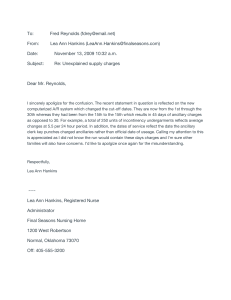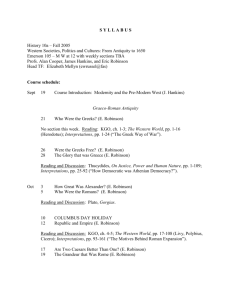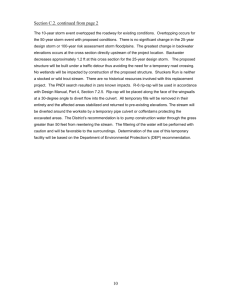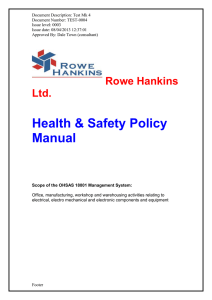Teaching Through the Storm Reflection.doc
advertisement
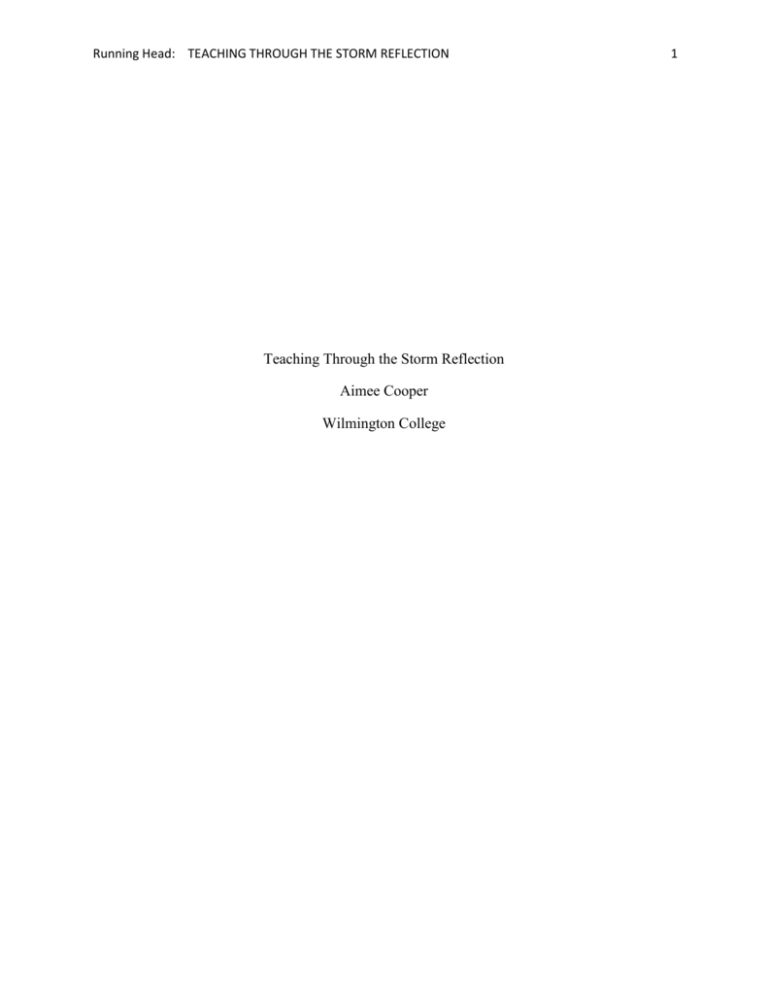
Running Head: TEACHING THROUGH THE STORM REFLECTION Teaching Through the Storm Reflection Aimee Cooper Wilmington College 1 Running Head: TEACHING THROUGH THE STORM REFLECTION 2 Synopsis This is not my first time reading Teaching through the Storm by Karen Hale Hankins. I previously read the book when I had not yet started teaching. This might be why I had a different reaction to the book than before. The book focuses on Ms. Hankins teaching experience with a group of children over a year’s time. The school was in danger of being closed if grades did not improve and this led to many pressures. It was also the year of El Nino. Ms. Hankins compared the students differing behaviors and reactions to situations, to El Nino and its’ changing effects on the earth. Thus, the book is titled Teaching Through the Storm. Ms. Hankins goes through many changes with the children and the book follows the children and their lives. It also brings in the children’s families’ lives. The children’s outside lives highly affect how the children do in the classroom and in Ms. Hankins impressions of the children. Ms. Hankins doesn’t start out thinking that she is going to write a book. She starts journaling as a way of self-reflection. She starts writing little notes to herself in order to remember to write the important things down later. While Ms. Hankins’ goal at first for timing herself was so that she could would be able to write daily and have a little time to herself to selfreflect, the ten minute time limit turned out to be a good way of insuring the data was not tainted in any way. Running Head: TEACHING THROUGH THE STORM REFLECTION 3 Three Important Ideas Three important ideas that I took from the book are first the idea of journaling your thoughts on a daily basis and making sure to set a specific amount of time. This makes you be able to take time for yourself and to self-reflect. As I stated previously, I have had a different take on the book now that I am a full-time teacher. I value Ms. Hankins’ opinions more. Her idea of journaling and writing down important facts during the day to reflect on later would be a very useful tool. This helps you to move on during the day and then take the necessary time when you can to reflect on the issues. It helps you to not react in the moment and therefore not making a hasty decision. The second important idea I took from the book was keeping your personal feelings separate from teaching. I struggle with this very much. As one of my colleagues states to me repeatedly, “It’s not personal Aimee”, when I become angry with the children. While it may not be personal, it often feels like a personal affront to you. When you are a new teacher, you often put so much of yourself into teaching the children, that you tend to not realize how much you are devoting of yourself. Until that first parent/teacher meeting or a parent or student questions your ability, you do not know how personal you will take it or how defensively you will react. The third important idea I took from the book was Hankins’ model of teaching that connects the student to the content and the curriculum. Students take a more vested interest and learn more when they are connected to the subject. Expressing emotions helps the students to be connected as well and makes the learning more enjoyable. Running Head: TEACHING THROUGH THE STORM REFLECTION 4 How the Book Will Affect My Teaching This book has affected my teaching more now than in the past. Being a first time teacher, I look for suggestions from teachers. I find I like to hear from other first time teachers and their trials and tribulations. I find comfort in other’s struggles and triumphs. It gives me courage to see that not everything has an answer and you are not going to reach every child. However, you might reach more than you ever knew you would. I also might start experimenting with journaling. I think that journaling on any level is a good idea and teacher’s these days teachers have very stressful lives. Journaling would greatly reduce stress. Value Added Measures In regards to Value Added Measures, I think that Hankins would not support this. As the articles that we have read have pointed out, Value Added often doesn’t read accurately when there are limited resources available to the teacher. Ms. Hankins was in a school that was being threatened with shutting down. She was under extreme pressure to improve test scores and make the school seem worth keeping open. I wonder if Ms. Hankins is still teaching today and what she would say about No Child Left Behind, Value Added Measurements, and Standards Based Testing. Running Head: TEACHING THROUGH THE STORM REFLECTION References Hankins, K.H. (2003). Teaching Through the Storm: A Journal of Hope. New York: Teachers College Press. 5
